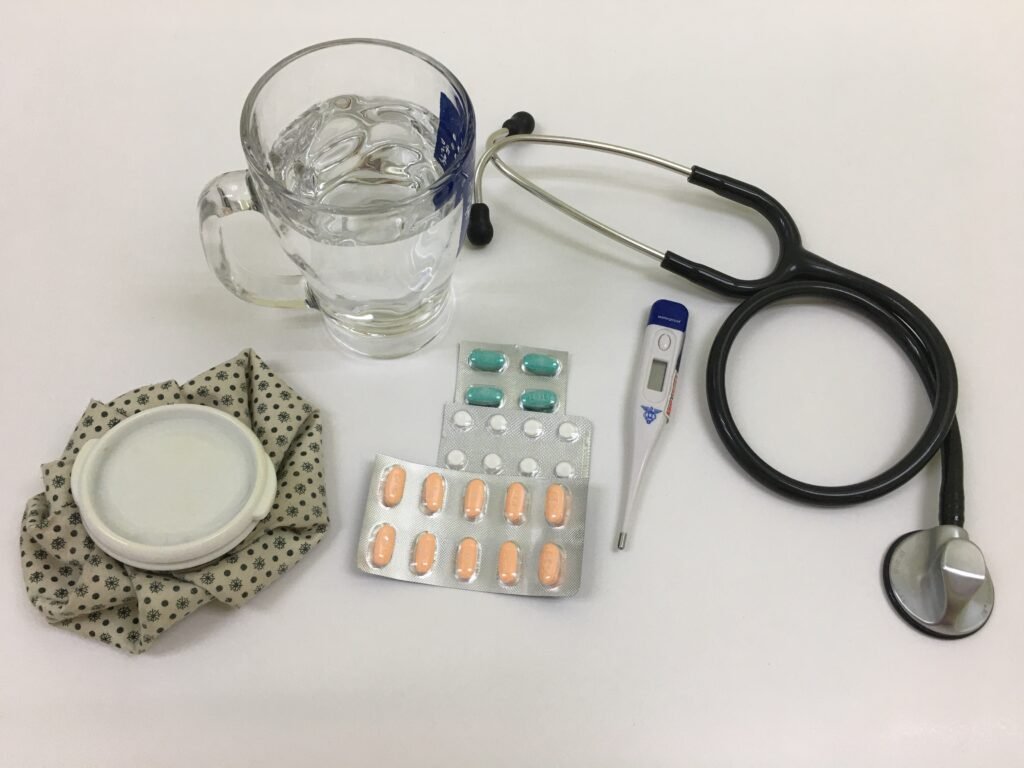Let’s clear up the confusion once and for all – is Ozempic considered insulin? In short, the answer is no. Ozempic is not insulin, but rather a different type of medication called a GLP-1 receptor agonist. While both Ozempic and insulin are used to manage blood sugar levels in people with type 2 diabetes, they work in different ways. Insulin helps lower blood sugar by moving glucose from the blood into the cells, whereas Ozempic stimulates the release of insulin and reduces the liver’s production of glucose. So, next time someone asks whether Ozempic is insulin, you can confidently say it’s not, but it plays a crucial role in diabetes management.
Understanding Ozempic
What is Ozempic?
Ozempic is a medication that belongs to a class of drugs called glucagon-like peptide-1 receptor agonists, or GLP-1 receptor agonists for short. It is specifically designed to help improve blood sugar control in adults with type 2 diabetes. The active ingredient in Ozempic is semaglutide, which works by mimicking the effects of a naturally occurring hormone called glucagon-like peptide-1 (GLP-1) in the body.
How does Ozempic work?
Ozempic helps to control blood sugar by acting on the GLP-1 receptors in the pancreas. When Ozempic is injected, it activates these receptors, stimulating the release of insulin from the pancreas and reducing the production of glucose in the liver. In addition, Ozempic slows down the emptying of food from the stomach, which helps to regulate blood sugar levels after meals. These combined actions help to lower and maintain more stable blood sugar levels in people with type 2 diabetes.
What conditions does Ozempic treat?
Ozempic is primarily used for the treatment of type 2 diabetes. It is indicated as an adjunct to diet and exercise to improve glycemic control in adults with type 2 diabetes. It is often prescribed when other diabetes medications, such as metformin, are not providing sufficient blood sugar control. Ozempic is not intended for use in the treatment of type 1 diabetes.
Is Ozempic an injectable medication?
Yes, Ozempic is an injectable medication. It is administered once a week via a subcutaneous injection, which means it is injected just under the skin using a small needle. The injection can be given in the abdomen, thigh, or upper arm. It is important to follow your healthcare provider’s instructions for proper injection technique and site rotation to minimize injection site reactions. If you have any concerns about using an injectable medication, it is always best to discuss them with your healthcare provider.
Differentiating Ozempic from Insulin
What is insulin?
Insulin is a hormone produced by the pancreas that plays a crucial role in regulating blood sugar levels. It acts as a key to unlock cells in the body so that glucose can enter and be used for energy. In people with diabetes, either the pancreas does not produce enough insulin (type 1 diabetes) or the body does not effectively use the insulin it produces (type 2 diabetes). Insulin therapy is commonly used to help manage diabetes by replacing or supplementing the body’s natural insulin.
How does insulin work?
Insulin works by binding to specific insulin receptors on the surface of cells throughout the body. This binding triggers a series of cellular events that enable glucose uptake from the bloodstream into the cells. By facilitating glucose entry into cells, insulin helps to lower blood sugar levels. In addition to its role in glucose regulation, insulin also plays a role in the metabolism of fats and proteins.
Why is insulin necessary for some people?
Insulin is necessary for individuals with type 1 diabetes because their pancreas does not produce any insulin. Without insulin therapy, people with type 1 diabetes would not be able to effectively regulate their blood sugar levels. In type 2 diabetes, insulin therapy may be necessary when the body does not produce enough insulin or becomes resistant to the effects of insulin. Insulin therapy can help to improve blood sugar control and prevent complications associated with diabetes.
Comparing Ozempic and insulin
While Ozempic and insulin are both used to manage diabetes, they differ in their mechanisms of action and method of administration. Ozempic, as a GLP-1 receptor agonist, works by stimulating the release of insulin and reducing glucose production in the liver. Insulin, on the other hand, directly replaces or supplements the body’s own insulin. Ozempic requires once-weekly injections, while insulin may be injected multiple times a day depending on the individual’s needs. The choice between Ozempic and insulin depends on various factors, including individual treatment goals, preferences, and healthcare provider recommendations.

Is Ozempic Considered Insulin?
Definition of insulin
Insulin is a hormone that regulates blood sugar levels and is necessary for the body to effectively utilize glucose for energy. It is primarily produced by the pancreas and plays a vital role in maintaining normal blood sugar levels.
Mechanism of action of Ozempic
Ozempic, as a GLP-1 receptor agonist, works by stimulating GLP-1 receptors in the pancreas. This stimulation leads to increased insulin secretion, decreased glucagon secretion (a hormone that raises blood sugar levels), and delayed gastric emptying. These actions collectively help to improve blood sugar control in individuals with type 2 diabetes.
Comparison of Ozempic with insulin
While both Ozempic and insulin play a role in managing blood sugar levels, they differ in their mechanisms of action. Insulin directly replaces or supplements the body’s own insulin, whereas Ozempic acts by mimicking the effects of GLP-1 in the body. Ozempic does not contain insulin and should not be considered a substitute for insulin therapy. The choice between Ozempic and insulin depends on individual treatment goals, healthcare provider recommendations, and factors such as tolerability, convenience, and blood sugar control.
Effects on blood sugar levels
Both Ozempic and insulin can effectively lower blood sugar levels. However, the specific effects on blood sugar may vary between individuals. Some people with type 2 diabetes may achieve adequate blood sugar control with Ozempic alone, while others may require additional medications like insulin to reach their target blood sugar levels. It is important to regularly monitor blood sugar levels and work closely with a healthcare provider to determine the most appropriate treatment plan.
Safety and Side Effects
Common side effects of Ozempic
Common side effects of Ozempic may include nausea, vomiting, diarrhea, constipation, abdominal pain, and decreased appetite. These side effects are usually mild and transient. Some individuals may also experience injection site reactions, such as redness, swelling, or itching at the injection site. It is important to inform your healthcare provider if you experience any persistent or bothersome side effects while taking Ozempic.
Contraindications and precautions
Ozempic is contraindicated in individuals with a personal or family history of medullary thyroid carcinoma (MTC) or multiple endocrine neoplasia syndrome type 2 (MEN 2). It is also not recommended for use in individuals with severe gastrointestinal disease or a history of hypersensitivity to semaglutide or any of the product’s components. Precautions should be taken when using Ozempic in individuals with a history of pancreatitis or when used with medications that increase the risk of hypoglycemia (low blood sugar). It is important to discuss your medical history and any potential risks with your healthcare provider before starting Ozempic.
Is Ozempic suitable for everyone?
Ozempic may not be suitable for everyone with type 2 diabetes. It is important to discuss your medical history, current medications, and any specific concerns with your healthcare provider before starting Ozempic. They will be able to determine if Ozempic is a suitable treatment option for you based on your individual circumstances.
Safety profile of insulin
Insulin has been used for many years in the treatment of diabetes and has a well-established safety profile when used as prescribed. However, like any medication, insulin carries the risk of side effects. These can include low blood sugar (hypoglycemia), weight gain, and injection site reactions. It is important to work closely with your healthcare provider to monitor and manage any potential side effects associated with insulin therapy.

Prescribing and Usage
Dosage and administration of Ozempic
The recommended starting dose of Ozempic is 0.25 mg once weekly. After four weeks, the dose can be increased to 0.5 mg once weekly to further improve blood sugar control. Ozempic is typically administered as a subcutaneous injection in the abdomen, thigh, or upper arm. It is important to follow the specific instructions provided by your healthcare provider for proper administration techniques and site rotation.
Monitoring and adjusting Ozempic therapy
Regular monitoring of blood sugar levels is important when using Ozempic to ensure proper glycemic control. Your healthcare provider may periodically adjust your dose based on your individual response and treatment goals. It is recommended to follow up with your healthcare provider regularly to assess the effectiveness and safety of Ozempic therapy.
Prescribing guidelines for insulin
The dosage and administration of insulin can vary depending on individual needs and treatment goals. Insulin is available in different formulations, including rapid-acting, short-acting, intermediate-acting, and long-acting insulins. Your healthcare provider will determine the most appropriate insulin regimen for you based on factors such as your blood sugar levels, lifestyle, and treatment preferences. It is important to adhere to the prescribed insulin regimen and follow your healthcare provider’s instructions for proper administration.
Supplementary use of Ozempic with insulin
In some cases, your healthcare provider may recommend using Ozempic in combination with insulin to achieve optimal blood sugar control. The combined use of Ozempic and insulin can help address different aspects of diabetes management and may be particularly beneficial for individuals who have not achieved adequate blood sugar control with insulin alone. It is essential to work closely with your healthcare provider to determine the most appropriate treatment plan.
Cost and Availability
Insurance coverage for Ozempic
The availability and coverage of Ozempic may vary depending on your insurance provider and specific plan. It is important to contact your insurance company to determine if Ozempic is covered and what potential out-of-pocket costs may be involved. Some insurance plans may require prior authorization or impose restrictions on the use of certain medications. Patient assistance programs may also be available to help individuals with financial hardship access Ozempic.
Patient assistance programs
Patient assistance programs provided by the manufacturer of Ozempic may offer financial assistance or discounts for eligible individuals. These programs aim to ensure that patients who need Ozempic can access it despite financial limitations. It is recommended to contact the manufacturer or visit their website to learn more about any available patient assistance programs.
Availability of insulin
Insulin is widely available and commonly prescribed for the treatment of diabetes. It is available in various formulations and brands, and can typically be obtained from pharmacies with a prescription from a healthcare provider. However, the specific availability and cost of insulin may vary depending on factors such as location, insurance coverage, and individual circumstances.
Affordability considerations
The cost of diabetes medications, including Ozempic and insulin, can be a significant consideration for individuals. It is important to discuss any concerns related to affordability with your healthcare provider and explore potential options such as patient assistance programs, generic alternatives (if available), or alternative treatment options. Your healthcare provider can work with you to find a suitable and affordable treatment plan.

Patient Perspectives
Experiences of Ozempic users
Many individuals have reported positive experiences with Ozempic, noting improvements in blood sugar control and overall well-being. Some users have reported weight loss as a beneficial side effect, while others appreciate the convenience of once-weekly dosing. It is important to remember that individual experiences may vary, and what works well for one person may not necessarily work the same way for another. Hearing about the experiences of others can be informative, but it is always best to discuss your specific needs and concerns with your healthcare provider.
Challenges and benefits of using insulin
Using insulin therapy can present both challenges and benefits for individuals with diabetes. Some challenges can include the need for multiple daily injections, the potential for hypoglycemia, and the adjustment and monitoring of insulin doses. However, the benefits of insulin therapy can outweigh these challenges. Insulin therapy can help improve blood sugar control, reduce the risk of diabetes-related complications, and enhance overall quality of life for many individuals with diabetes.
Impact on daily life and management
Managing diabetes, whether with Ozempic or insulin, can have an impact on daily life. It may involve regular blood sugar monitoring, medication administration, dietary considerations, and lifestyle modifications. However, effective management can lead to improved health outcomes and a higher quality of life. It is important to work closely with your healthcare provider to develop a personalized diabetes management plan that takes into account your individual needs, goals, and lifestyle.
Conclusion
Summary of key points
Ozempic is an injectable medication used to improve blood sugar control in adults with type 2 diabetes. It works by activating GLP-1 receptors, leading to increased insulin secretion, decreased glucagon secretion, and delayed gastric emptying. While Ozempic is not considered insulin, it can be used in combination with insulin to achieve optimal blood sugar control. Ozempic has its own unique mechanism of action and administration schedule, which differs from insulin therapy. It is important to discuss the best treatment options with your healthcare provider based on your individual needs.
Final considerations on Ozempic and insulin
Both Ozempic and insulin have a role in the management of type 2 diabetes. They have distinct mechanisms of action, administration methods, and potential side effects. The choice between Ozempic and insulin depends on factors such as treatment goals, individual preferences, and healthcare provider recommendations. It is important to work closely with your healthcare provider to develop a personalized treatment plan that addresses your specific needs and optimizes your diabetes management. Regular monitoring, open communication, and a proactive approach to self-care are key to achieving and maintaining optimal blood sugar control.


